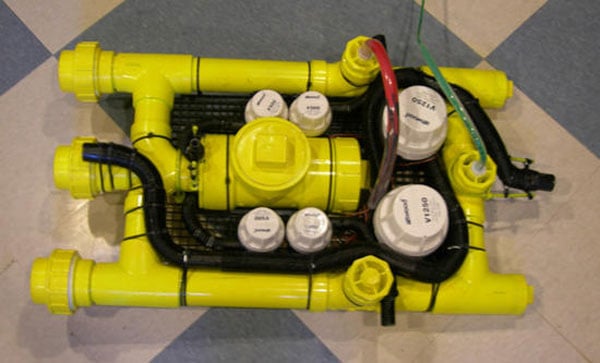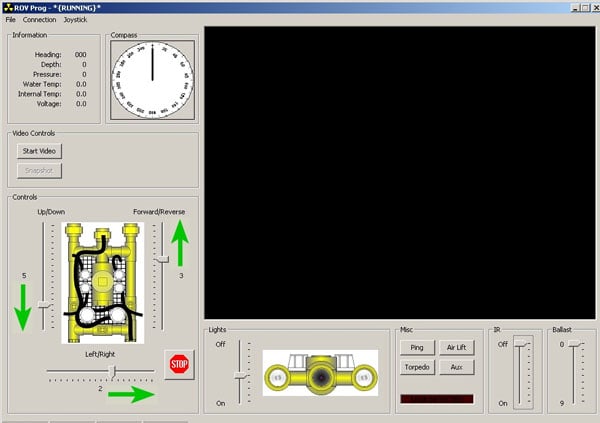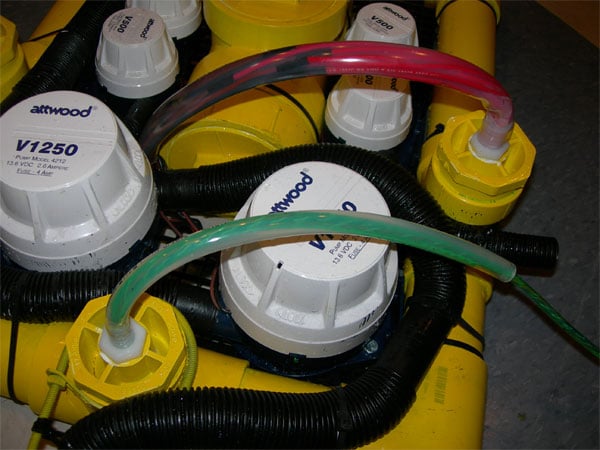If you’re looking for a project to keep you busy this weekend, why not build your own underwater remotely operated vehicle (ROV) submarine? This fascinating and educational project can provide hours of entertainment and a sense of accomplishment once completed.
Designed and constructed by Jason Rollettes, the ROV was commissioned to explore a shipwreck in Lake Michigan. The project not only showcases Jason’s engineering skills but also highlights the potential for amateur enthusiasts to engage in underwater exploration.

The Inspiration Behind the ROV
Jason Rollettes was inspired to build his ROV submarine after learning about a lost shipwreck in Lake Michigan. The idea of uncovering hidden history beneath the water’s surface was too enticing to resist. With a background in engineering and a passion for underwater exploration, Jason set out to create a vehicle that could withstand the pressures of deep water and provide real-time video feedback.
With help from a programmer, Jason now has a software interface that allows him to control the sub and camera to try and track down the lost wreck. This interface is crucial for maneuvering the ROV and capturing high-quality footage of the underwater environment.



Building Your Own ROV Submarine
If you have a lost wreck near you or just fancy a lot of fun, why not build your own ROV with a camera and get exploring? Building an ROV submarine can be a rewarding project that combines elements of engineering, programming, and underwater exploration.
To get started, you’ll need a few essential components:
1. Frame and Buoyancy: The frame of the ROV can be made from PVC pipes or aluminum, providing a sturdy structure. Buoyancy can be adjusted using foam or other buoyant materials to ensure the ROV remains stable underwater.
2. Motors and Propellers: You’ll need waterproof motors and propellers to provide thrust and maneuverability. These can be sourced from hobby stores or online retailers.
3. Camera and Lights: A waterproof camera is essential for capturing footage. LED lights can be added to illuminate the underwater environment, making it easier to see in dark or murky waters.
4. Control System: The control system can be as simple or complex as you like. Jason used a custom software interface, but there are also off-the-shelf solutions available. A tethered control system is common, providing real-time feedback and control.
5. Power Supply: Ensure you have a reliable power source, such as a battery pack, to keep your ROV operational for extended periods.
Once you have all the components, assembly involves connecting the motors, camera, and control system to the frame. Testing in a controlled environment, like a swimming pool, is recommended before venturing into open water.
Full instructions to make Jason Rollettes’ ROV sub can be found [here](#). These detailed guidelines will walk you through the entire process, from sourcing materials to final assembly and testing.
Via Gizmowatch
Building your own ROV submarine is not only a fun and educational project but also a gateway to exploring the underwater world. Whether you’re searching for lost shipwrecks or simply enjoying the thrill of underwater exploration, this project offers endless possibilities. So, gather your materials, follow the instructions, and dive into the exciting world of ROV submarines!
Latest Geeky Gadgets Deals
Disclosure: Some of our articles include affiliate links. If you buy something through one of these links, Geeky Gadgets may earn an affiliate commission. Learn about our Disclosure Policy.